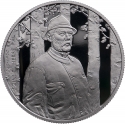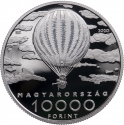You are about to finish your registration. Please check your mailbox (including spam folder). There should be a letter with a confirmation link. Check setting to make sure that your e-mail address is correct.
Send letter againDescription
Pál Merse Szinyei (1845-1920) was a Hungarian painter renowned for his vibrant and colorful landscape and genre paintings that often depicted scenes of rural life and nature.
He studied at the Academy of Fine Arts in Munich, where he was influenced by contemporary European art movements. Szinyei Merse Pál was one of the first Hungarian painters to adopt the techniques of Impressionism, and his work is characterized by its light, color, and naturalistic detail. His painting "Picnic in May" (1873) is one of his most famous works and is often cited as a pioneering example of Hungarian Impressionism. Initially, his style was not well-received in Hungary, leading to a period of discouragement and retreat from public life. However, he eventually returned to the art world and gained recognition for his work, becoming a professor and later the director of the Hungarian University of Fine Arts. Szinyei Merse Pál is regarded as a key figure in Hungarian art history, with his works held in high esteem and exhibited in major Hungarian museums, including the Hungarian National Gallery.
His notable works include "Picnic in May," "Lady in Violet" (1874), and "The Balloon" (1878). He played a crucial role in bridging Hungarian art with broader European trends, shaping the development of modern Hungarian painting.
Engraver: Borbála Szanyi
Obverse

|
Depicts a detail from Szinyei Merse Pál's painting "Self-Portrait in leather coat." Embedded in the depiction at the edge, on the left side, the birth and death years "1845–1920" are arranged in two vertical rows, along with the inscription "SZINYEI MERSE PÁL." On the right side, at the bottom, the engraver's privy mark is located. 1845-1920 |
|---|---|
Reverse

|
Depicts a detail from Szinyei Merse Pál's painting "The Balloon." Below the depiction, in three horizontal lines, the inscriptions "HUNGARY", the denomination, and "FORINT" can be read. Embedded in the depiction at the top edge, the mint mark "BP." is on the left side, and the year of issuance "2020" is on the right side. The mint mark contains micro-engraving that, under at least tenfold magnification, shows letters matching the mint mark's corresponding letter. BP. 2020 |
| Edge |
Characteristics
| Type | Commemorative Issue (Non-circulating) |
| Material | Copper Nickel |
| Weight | 23.7 g |
| Diameter | 37 mm |
| Thickness | - |
| Shape |
|
| Alignment | Medal |
| Mint |
Budapest Mint (BP)
|



